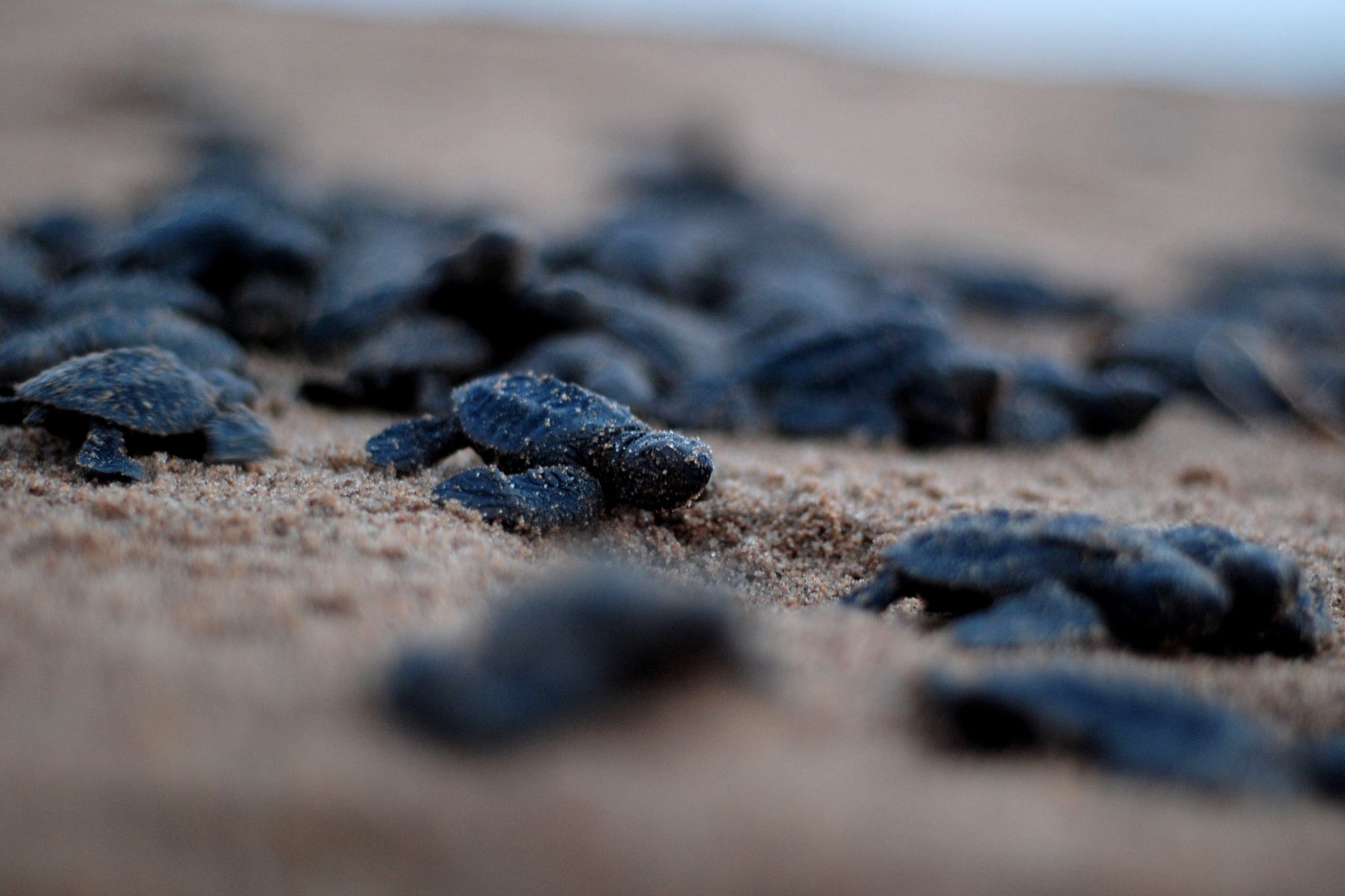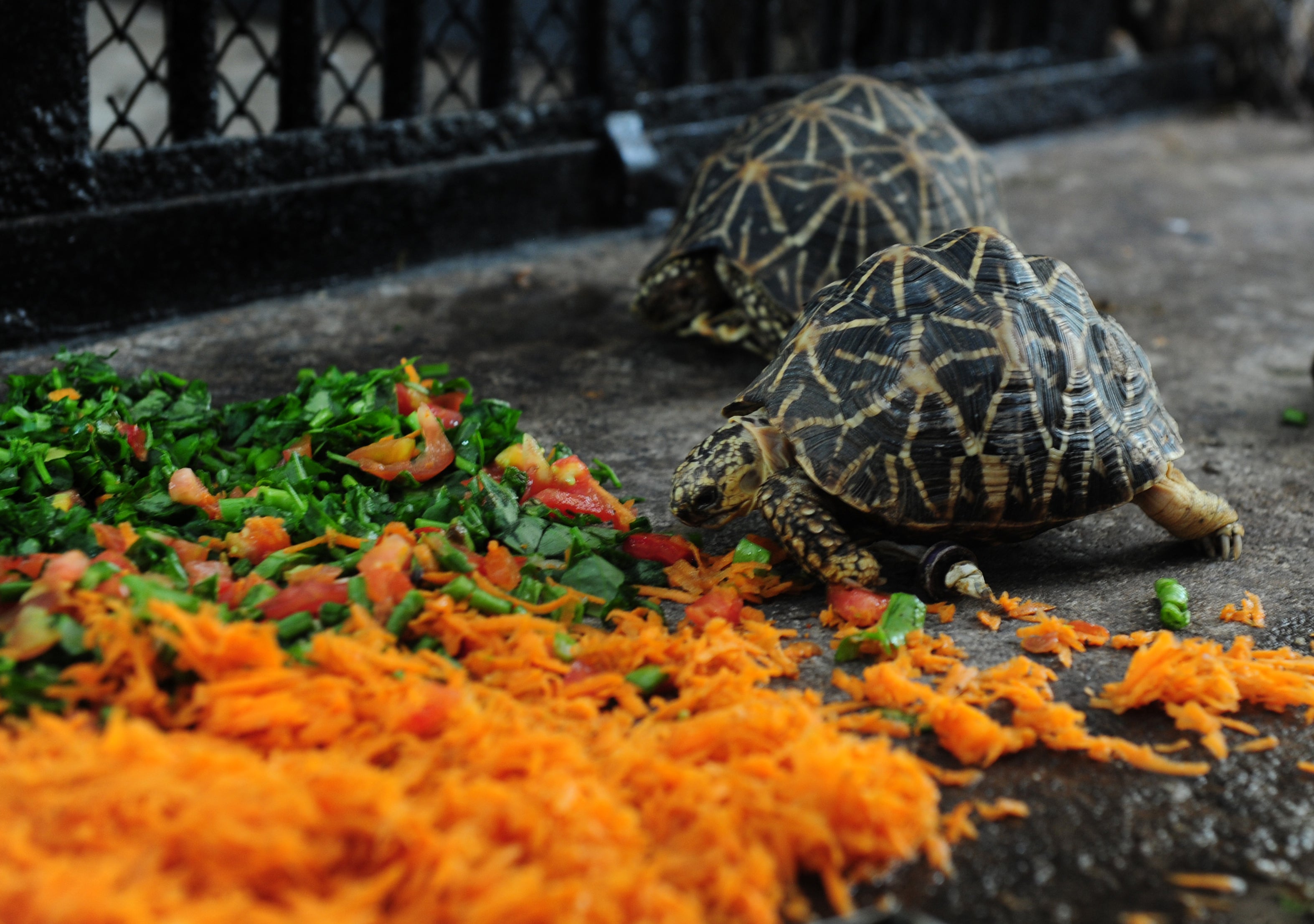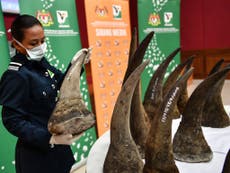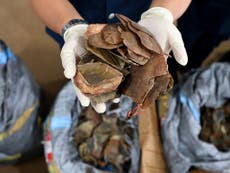The Independent's journalism is supported by our readers. When you purchase through links on our site, we may earn commission.
Stop the Illegal Wildlife Trade: Tragic tale of India’s illicit turtle trafficking industry
Despite being protected under numerous laws, tens of thousands of turtles and tortoises continue to be poached across India each year, writes Namita Singh


Your support helps us to tell the story
From reproductive rights to climate change to Big Tech, The Independent is on the ground when the story is developing. Whether it's investigating the financials of Elon Musk's pro-Trump PAC or producing our latest documentary, 'The A Word', which shines a light on the American women fighting for reproductive rights, we know how important it is to parse out the facts from the messaging.
At such a critical moment in US history, we need reporters on the ground. Your donation allows us to keep sending journalists to speak to both sides of the story.
The Independent is trusted by Americans across the entire political spectrum. And unlike many other quality news outlets, we choose not to lock Americans out of our reporting and analysis with paywalls. We believe quality journalism should be available to everyone, paid for by those who can afford it.
Your support makes all the difference.Sometimes it’s the SUVs, sometimes a Mercedes, other times a sedan, but this time it was a closed container carrier truck being used to transport turtles in India.
Law enforcement agencies had sprung into action when they were tipped off about the consignment that was on its way from the most populous state of Uttar Pradesh to West Bengal, which shares its borders with Bangladesh.
Police believe if all had gone to plan, the two suspects, now in custody, would have successfully transported the turtles to the animal markets in West Bengal. There, the reptiles would have either been sold as meat to the locals or exported across the border.
“The accused had stuffed more than 1,300 Indian Softshell turtles in 37 big gunny bags,” H V Girisha, an Indian Forest Service officer and regional deputy director for the Wildlife Crime Control Bureau told The Independent. The turtles, which normally have a lifespan of somewhere between 20 to 50 years, could not endure the stress of the journey and conditions in which they were kept, and about 30 of them had died.
“When we opened the seized bags, we found that 1,283 of them were alive, 13 were severely injured and 30 were almost dead,” said Mr Girisha. The entire consignment and the truck itself were then seized.
Stop The Illegal Wildlife Trade
We are working with conservation charities Space for Giants and Freeland to protect wildlife at risk from poachers due to the conservation funding crisis caused by Covid-19. Help is desperately needed to support wildlife rangers, local communities and law enforcement personnel to prevent wildlife crime. Donate to help Stop the Illegal Wildlife Trade HERE
The trade of turtles and tortoises is illegal in India. Most of these reptiles are protected under the Wild Life (Protection) Act, 1972 and their international trade is further regulated under the Convention on International Trade in Endangered Species of Wild Fauna and Flora (CITES), to which India has been a signatory since 1976.
Placed under schedule – I of the Wild Life (Protection) Act, 1972, turtles and tortoises have the highest level of legal protection in the country. “So if a species protected under the schedule – I of the Wild Life Protection Act, their trade invite a minimum of three years of imprisonment extendable to seven years. It is a non-bailable, cognisable offence,” Jose Louies, deputy director and chief of the Wildlife Crime Control Division at Wildlife Trust of India told The Independent. “They, therefore, have legal protection which is at par with big cats like tiger and leopard.”
But despite the high level of protection, their trade is flourishing. A 2019 report by TRAFFIC, an international wildlife trade monitoring organisation, found that a minimum of 100,000 tortoises and freshwater turtles were illegally traded between September 2009 and September 2019 in India.
The trade of these animals is so rampant, they were observed to be illegally transported through roadways, railways and airways.
A 2017 research by Freeland, one of two charities The Independent is working with as part of its Stop The Illegal Wildlife Trade, found at least 15 of India’s 28 tortoise and freshwater turtle (TFT) species were illegally harvested between 2011 and 2015.
The research, conducted in association with Turtle Survival Alliance- India, found about 58,000 live animals were seized during this period across India, Bangladesh, Thailand and China, nearly 90 per cent of which were being traded illegally. Of these, over 70 per cent of seizures were made in transit.

But it is not just the meat, for which these reptiles are traded. There is also a superstitious and mythological value attached to them. “According to Hindu mythological text, they are said to be an avatar of Lord Vishnu, so there is a belief that with it, goddess Laxmi-- the goddess of money and prosperity-- would also come along,” Mr Louies said. “Across different cultures, they are believed to bring in luck.”
Turtles and tortoises are also pretty low maintenance pets. “Any reptile is very easy to keep. In fact, you can send a turtle or tortoise by courier. Even they do not eat for two or three days, as long as they are not bashed around, the tortoise or turtle would survive and reach in as good a condition as it was sent,” said Aniruddha Mookerjee, a consultant wildlife adviser for the Wildlife Conservation Research Unit (WildCRU) at Oxford University.
Yet, despite their ability to withstand tough conditions, their rehabilitation after the seizure is a big concern among wildlife activists and experts.
“When an animal is put in gunny bags for days, it would be under high stress,” said Mr Girisha. “They have to be relaxed and need immediate medical attention for conditioning them before they are sent to the natural environment. The doctor there has to make an assessment, whether the reptile is healthy enough to be released into the wild.”
“The welfare issues in this trade are really abysmal,” added Mr Mookerjee. “They are taped up, not fed for many many days and are exported miles away from the natural environment they are endemic to. Obviously, trade mortality is very very high.”
“In fact, in many of the places where they are rescued, people do not know whether they are water turtles or dry land turtles and they are released in the water body. The reptile drowns and dies,” he said.
Another concern about releasing an alien turtle into freshwater bodies is that they could overpower the native population and become dominant there, as seen in the case of the American red-eared slider turtle. Though native to the central and eastern United States, the species was accidentally released to the Sukhna Lake in the north Indian state of Punjab and is now dominating other reptiles found in the area.

While the turtle and tortoise trade has been a menace in India for a long time, it did not always receive this level of protection domestically or internationally.
The concern was first raised seriously in 17th Conference of Parties of CITES held in 2016 in Johannesburg. The international body undertook an investigation according to which between 2000 to 2015, more than 300,000 turtles and tortoise were illegally traded across the world.
Among those, Indian Star Tortoise accounted for roughly 35,000. “More than 10 per cent. This is when we did not know the actual scale of the illegal trade in freshwater turtle and tortoise trade. The real numbers would be much higher,” said Mr Girisha.
In fact, a separate study published in the journal Nature Conservation by WildCRU showed that in 2014 alone, at least 55,000 Indian Star Tortoises were poached in India.
“Star tortoise, which is endemic to India is largely traded for petting purposes mostly because these are ornamental species,” explained Mr Mookerjee, one of the co-authors of the study. “These are ornamental but it is believed that some part of it is also sent to China where it is believed to be consumed as food.”
In a boost to India’s bid to protect endangered animal species, the United Nations Convention on International Trade in Endangered Species (CITES) in Geneva in August 2019 banned illegal international trade of Indian star tortoise, as it moved the species to Appendix I, giving it the highest level of international protection from commercial trade.
Earlier, the species was in Appendix II of the CITES, under which their trade was not completely restricted but regulated.
“Turtles are natural scavengers of the aquatic ecosystem. They help in cleaning the river by scavenging dead organic material and diseased fish, controlling fish population and other aquatic plants and weeds” explained Mr Girisha. And this is what makes them such an important part of India’s Ganga rejuvenation programme called Namami Gange, he said.
But despite, such strict regulations, the cross border trade of turtles and tortoise continues with impunity. “In true sense, the Wild Life (Protection) Act, 1972 is a strict law. But there are weaknesses in the enforcement system,” said Mr Girisha, elaborating on the implementation-related roadblock that the Wildlife Crime Control Bureau of India and other enforcement agencies face.
“There is no deployment of forest officers in the Indo-Gangetic Plain for they are supposed to be deployed in forested areas. That is not where the trade of these reptiles happens. It happens in crowded places like towns and villages located alongside the riverbank.”
“More importantly, the forest department of the country does not have an intelligence unit of its own, to process and convert the tip-offs into actionable inputs,” said Mr Girisha. “In essence, we do not have a robust system in place that backs the act.”



Join our commenting forum
Join thought-provoking conversations, follow other Independent readers and see their replies
Comments